| | |
Abdul Basith
|
Colombo, Sri Lanka-based designer of the alchemic typeface Geometric (2015), which according to the designer was influenced by De Stijl. Behance link. [Google]
[More] ⦿
|
Adhila Marz
|
 During her graphic design studies in Colombo, Sri Lanka, Adhila Marz created the display typeface Trasart (2013). [Google]
[More] ⦿
During her graphic design studies in Colombo, Sri Lanka, Adhila Marz created the display typeface Trasart (2013). [Google]
[More] ⦿
|
Akila Weerasinghe
|
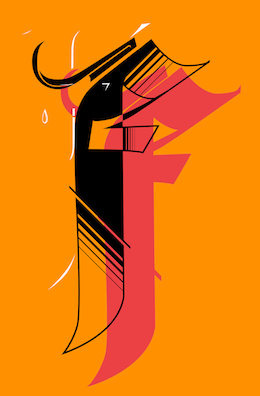 Colombo, Sri Lanka-based graphic designer who created a stunning letter F in 2017. [Google]
[More] ⦿
Colombo, Sri Lanka-based graphic designer who created a stunning letter F in 2017. [Google]
[More] ⦿
|
Aravinda Illangangedara
|
Colombo, Sri Lanka-based creator of the straight-edged monoline Latin typeface Space Type (2013) and of the techno typefaces Cube (2014), Obo (2014), NP (2014) and Colombo 006 (2013). Behance link. [Google]
[More] ⦿
|
Carl Seal
[Little Red Circles (or: LRC Type Foundry)]
|
[More] ⦿
|
Centre for Computer Studies, Sabaragamuwa University
|
Sri Lankan university site with these Sinhala truetype fonts: MataraNormal, Matara-Supplement, AjithNewS, DL-KIDURU, DL-Lihini, DL-Manel, DL-MANO.., DL-Manel, Kaputadotcomnormal, DL-kumari., DL-Malathi., DL-Anurada, DL-Manel, ManelNew, Radhika-PC, Ranasuru-PC. [Google]
[More] ⦿
|
Chamath Keppitiyagama
|
Sri Lankan designer of the Hiruni BDF fonts (for X Windows), which he developed by using ttf2bdf based on Chrismal Panditharatne's original truetype font by that name. He is in Computer Science at UBC in Vancouver, and asked me to remove his URL and email address. [Google]
[More] ⦿
|
Chandana Madhura Kulathunga
[Madhura Sinhala Font]
|
[More] ⦿
|
Chrismal Panditharatne
|
Sri Lankan designer of the Hiruni truetype font. He also wrote a Sinhalese text editor. [Google]
[More] ⦿
|
Digital Research Sri Lanka
|
Sri Lanka-based company that produces Tamil and Sinhala fonts. Among the Sinhala fonts, we have Kaputadotcom (2002; see also here and here) and Matara (1998), which can be found here. This page has, in addition, Jaffna (for Tamil), Kakamdotcom (2002, a Tamil font by Niranjan Meegammana, Digital Research Sri Lanka), and the Sinhala fonts Kaputa2004 and KaputaUnicode (2004, Efusion). [Google]
[More] ⦿
|
Dr. M.U.P.K. Peris
|
Consultant Psychiatrist and a Senior Lecturer in Psychiatry at the University of Kelaniya Sri Lanka. Designer of these free Sinhala fonts: - Upal.
- Dusharnbi. This font was jointly made by Dr. M.U.P.K. Peris and Rich Gast.
[Google]
[More] ⦿
|
Ethno Multimedia
[Vijayakumar Sinnathurai]
|
Publisher of Indic fonts, who set up Ethno fonts. He studied mechanical engineering at University of Sri Lanka in Peradeniya, Sri Lanka (1978) and chemical engineering at the University of Toronto (1981). He settled in Canada, and obtained a Ph.D. in chemical engineering from the University of Toronto in 2005. He had a lifelong interest in mathematical modeling and type design. Vijayakumar died in 2017. Some of his Tamil fonts could be found at R. Padmakumar's archive. In 2017, after his death, Vijayakumar's family granted me permission to place the collection on my site for free download. There are sometimes multiple versions of the same font, with minor changes. All of these are included too. The list: - Aabohi Adaanaa (1993)
- Anantha Shanmugathas (1993, with Ranjan Shivakumar&EPICS)
- Ananthabairavi (1994, with Ranjan Shivakumar)
- Boopalam (1994)
- Chunnakan (1995)
- DenukaPC (1995)
- Dheepa
- Gayathri.
- Geethapria (1993)
- Hamsathvani (1995, with B. Gnanapandithan)
- Hemawathy
- Hindolam (1995)
- Janaranjani
- Kalyani (1994)
- Kamaas (1993, with Ranjan Shivakumar)
- Karaharapriya (1994)
- Keeravani (1994, with B. Gnanapandithan)
- Lathangi
- Madhuvanthi (1992)
- Mohanam (1993, with Ranjan Shivakumar)
- Nagananthini (1994, with Nicolas)
- Needhimathi (1995)
- Ranjani (1992)
- Rasihapriya (1993)
- Sahaanaa (1995)
- Sangeetha
- Saraswathy (1993)
- Sevvanthi
- Sindhubairavi (1995)
Missing are Adankappidaari (1993, with Ranjan Shivakumar), Kilavi (1993), Malayamarutham (1994), Pichchaikari (1993, with Nicolas), Shanmugapriya (1993, with B. Gnanapandithan), Sindhu (1993), Sngarabaranam (1993), TML Helv Plain (1992). His fonts were developed on Commodore 64, on which one could not make the long N (Moonu suzhi N) as a single character and the result was a non-symmetric placement of the pulli (the dot). Vijayakumar continued that style in his fonts so he could easily recognize his work anywhere. That asymmetric pulli also led to the demise of his typefaces. A link has been set up to raise funds for the Vijayakumar scholarship at the University of Toronto to honour his memory. Download link. [Google]
[More] ⦿
|
GNU Freefont (or: Free UCS Outline Fonts)
[Steve White]
|
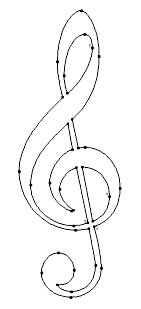 The GNU Freefont is continuously being updated to become a large useful Unicode monster. GNU FreeFont is a free family of scalable outline fonts, suitable for general use on computers and for desktop publishing. It is Unicode-encoded for compatability with all modern operating systems. There are serif, Sans and Mono subfamilies. Also called the "Free UCS Outline Fonts", this project is part of the larger Free Software Foundation. The original head honcho was Primoz Peterlin, the coordinator at the Institute of Biophysics of the University of Ljubljana, Slovenia. In 2008, Steve White (aka Stevan White) took over. URW++ Design&Development GmbH. URW++ donated a set of 35 core PostScript Type 1 fonts to the Ghostscript project.
The GNU Freefont is continuously being updated to become a large useful Unicode monster. GNU FreeFont is a free family of scalable outline fonts, suitable for general use on computers and for desktop publishing. It is Unicode-encoded for compatability with all modern operating systems. There are serif, Sans and Mono subfamilies. Also called the "Free UCS Outline Fonts", this project is part of the larger Free Software Foundation. The original head honcho was Primoz Peterlin, the coordinator at the Institute of Biophysics of the University of Ljubljana, Slovenia. In 2008, Steve White (aka Stevan White) took over. URW++ Design&Development GmbH. URW++ donated a set of 35 core PostScript Type 1 fonts to the Ghostscript project. - Basic Latin (U+0041-U+007A)
- Latin-1 Supplement (U+00C0-U+00FF)
- Latin Extended-A (U+0100-U+017F)
- Spacing Modifier Letters (U+02B0-U+02FF)
- Mathematical Operators (U+2200-U+22FF)
- Block Elements (U+2580-U+259F)
- Dingbats (U+2700-U+27BF)
Yannis Haralambous and John Plaice. Yannis Haralambous and John Plaice are the authors of Omega typesetting system, which is an extension of TeX. Its first release, aims primarily at improving TeX's multilingual abilities. In Omega all characters and pointers into data-structures are 16-bit wide, instead of 8-bit, thereby eliminating many of the trivial limitations of TeX. Omega also allows multiple input and output character sets, and uses programmable filters to translate from one encoding to another, to perform contextual analysis, etc. Internally, Omega uses the universal 16-bit Unicode standard character set, based on ISO-10646. These improvements not only make it a lot easier for TeX users to cope with multiple or complex languages, like Arabic, Indic, Khmer, Chinese, Japanese or Korean, in one document, but will also form the basis for future developments in other areas, such as native color support and hypertext features. ... Fonts for UT1 (omlgc family) and UT2 (omah family) are under development: these fonts are in PostScript format and visually close to Times and Helvetica font families. - Latin Extended-B (U+0180-U+024F)
- IPA Extensions (U+0250-U+02AF)
- Greek (U+0370-U+03FF)
- Armenian (U+0530-U+058F)
- Hebrew (U+0590-U+05FF)
- Arabic (U+0600-U+06FF)
- Currency Symbols (U+20A0-U+20CF)
- Arabic Presentation Forms-A (U+FB50-U+FDFF)
- Arabic Presentation Forms-B (U+FE70-U+FEFF)
Yannis Haralambous and Wellcome Institute. In 1994, The Wellcome Library The Wellcome Institute for the History of Medicine 183 Euston Road, London NW1 2BE, England, commissioned Mr. Haralambous to produce a Sinhalese font for them. We have received 03/09 official notice from Robert Kiley, Head of e-Strategy for the Wellcome Library, that Yannis' font could be included in GNU FreeFont under its GNU license: Sinhala (U+0D80-U+0DFF). Young U. Ryu at the University of Texas at Dallas is the author of Txfonts, a set of mathematical symbols designed to accompany text typeset in Times or its variants. In the documentation, Young adresses the design of mathematical symbols: "The Adobe Times fonts are thicker than the CM fonts. Designing math fonts for Times based on the rule thickness of Times =,, +, /, <, etc. would result in too thick math symbols, in my opinion. In the TX fonts, these glyphs are thinner than those of original Times fonts. That is, the rule thickness of these glyphs is around 85% of that of the Times fonts, but still thicker than that of the CM fonts." Ranges: Arrows (U+2190-U+21FF), Mathematical Symbols (U+2200-U+22FF). Valek Filippov added Cyrillic glyphs and composite Latin Extended A to the whole set of the abovementioned URW set of 35 PostScript core fonts, Ranges: Latin Extended-A (U+0100-U+017F), Cyrillic (U+0400-U+04FF). Wadalab Kanji Comittee. Between April 1990 and March 1992, Wadalab Kanji Comittee put together a series of scalable font files with Japanese scripts, in four forms: Sai Micho, Chu Mincho, Cho Kaku and Saimaru. The font files were written in custom file format, while tools for conversion into Metafont and PostScript Type 1 were also supplied. The Wadalab Kanji Comittee has later been dismissed, and the resulting files can be now found on the FTP server of the Depertment of Mathematical Engineering and Information Physics, Faculty of Engineering, University of Tokyo: Hiragana (U+3040-U+309F), Katakana (U+30A0-U+30FF). Note that some time around 2009, the hiragana and katakana ranges were deleted. Angelo Haritsis has compiled a set of Greek type 1 fonts. The glyphs from this source has been used to compose Greek glyphs in FreeSans and FreeMono. Greek (U+0370-U+03FF). Yannis Haralambous and Virach Sornlertlamvanich. In 1999, Yannis Haralambous and Virach Sornlertlamvanich made a set of glyphs covering the Thai national standard Nf3, in both upright and slanted shape. Range: Thai (U+0E00-U+0E7F). Shaheed Haque has developed a basic set of basic Bengali glyphs (without ligatures), using ISO10646 encoding. Range: Bengali (U+0980-U+09FF). Sam Stepanyan created a set of Armenian sans serif glyphs visually compatible with Helvetica or Arial. Range: Armenian (U+0530-U+058F). Mohamed Ishan has started a Thaana Unicode Project. Range: Thaana (U+0780-U+07BF). Sushant Kumar Dash has created a font in his mother tongue, Oriya: Oriya (U+0B00-U+0B7F). But Freefont has dropped Oriya because of the absence of font features neccessary for display of text in Oriya. Harsh Kumar has started BharatBhasha for these ranges: - Devanagari (U+0900-U+097F)
- Bengali (U+0980-U+09FF)
- Gurmukhi (U+0A00-U+0A7F)
- Gujarati (U+0A80-U+0AFF)
Prasad A. Chodavarapu created Tikkana, a Telugu font family: Telugu (U+0C00-U+0C7F). It was originally included in GNU Freefont, but supoort for Telugu was later dropped altogether from the GNU Freefont project. Frans Velthuis and Anshuman Pandey. In 1991, Frans Velthuis from the Groningen University, The Netherlands, released a Devanagari font as Metafont source, available under the terms of GNU GPL. Later, Anshuman Pandey from Washington University in Seattle, took over the maintenance of font. Fonts can be found on CTAN. This font was converted the font to Type 1 format using Peter Szabo's TeXtrace and removed some redundant control points with PfaEdit. Range: Devanagari (U+0900-U+097F). Hardip Singh Pannu. In 1991, Hardip Singh Pannu has created a free Gurmukhi TrueType font, available as regular, bold, oblique and bold oblique form. Range: Gurmukhi (U+0A00-U+0A7F). Jeroen Hellingman (The Netherlands) created a set of Malayalam metafonts in 1994, and a set of Oriya metafonts in 1996. Malayalam fonts were created as uniform stroke only, while Oriya metafonts exist in both uniform and modulated stroke. From private communication: "It is my intention to release the fonts under GPL, but not all copies around have this notice on them." Metafonts can be found here and here. Ranges: Oriya (U+0B00-U+0B7F), Malayalam (U+0D00-U+0D7F). Oriya was subsequently dropped from the Freefont project. Thomas Ridgeway, then at the Humanities And Arts Computing Center, Washington University, Seattle, USA, (now defunct), created a Tamil metafont in 1990. Anshuman Pandey from the same university took over the maintenance of font. Fonts can be found at CTAN and cover Tamil (U+0B80-U+0BFF). Berhanu Beyene, Prof. Dr. Manfred Kudlek, Olaf Kummer, and Jochen Metzinger from the Theoretical Foundations of Computer Science, University of Hamburg, prepared a set of Ethiopic metafonts. They also maintain the home page on the Ethiopic font project. Someone converted the fonts to Type 1 format using TeXtrace, and removed some redundant control points with PfaEdit. Range: Ethiopic (U+1200-U+137F). Maxim Iorsh. In 2002, Maxim Iorsh started the Culmus project, aiming at providing Hebrew-speaking Linux and Unix community with a basic collection of Hebrew fonts for X Windows. The fonts are visually compatible with URW++ Century Schoolbook L, URW++ Nimbus Sans L and URW++ Nimbus Mono L families, respectively. Range: Hebrew (U+0590-U+05FF). Vyacheslav Dikonov made a Braille unicode font that could be merged with the UCS fonts to fill the 2800-28FF range completely (uniform scaling is possible to adapt it to any cell size). He also contributed a free Syriac font, whose glyphs (about half of them) are borrowed from the free Carlo Ator font. Vyacheslav also filled in a few missing spots in the U+2000-U+27FF area, e.g., the box drawing section, sets of subscript and superscript digits and capital Roman numbers. Ranges: Syriac (U+0700-U+074A), Box Drawing (U+2500-U+257F), Braille (U+2800-U+28FF). Panayotis Katsaloulis helped fixing Greek accents in the Greek Extended area: (U+1F00-U+1FFF). M.S. Sridhar. M/S Cyberscape Multimedia Limited, Mumbai, developers of Akruti Software for Indian Languages (http://www.akruti.com/), have released a set of TTF fonts for nine Indian scripts (Devanagari, Gujarati, Telugu, Tamil, Malayalam, Kannada, Bengali, Oriya, and Gurumukhi) under the GNU General Public License (GPL). You can download the fonts from the Free Software Foundation of India WWW site. Their original contributions to Freefont were - Devanagari (U+0900-U+097F)
- Bengali (U+0980-U+09FF)
- Gurmukhi (U+0A00-U+0A7F)
- Gujarati (U+0A80-U+0AFF)
- Oriya (U+0B00-U+0B7F)
- Tamil (U+0B80-U+0BFF)
- Telugu (U+0C00-U+0C7F)
- Kannada (U+0C80-U+0CFF)
- Malayalam (U+0D00-U+0D7F)
Oriya, Kannada and Telugu were dropped from the GNU Freefont project. DMS Electronics, The Sri Lanka Tipitaka Project, and Noah Levitt. Noah Levitt found out that the Sinhalese fonts available on the site metta.lk are released under GNU GPL. These glyphs were later replaced by those from the LKLUG font. Finally the range was completely replaced by glyphs from the sinh TeX font, with much help and advice from Harshula Jayasuriya. Range: Sinhala (U+0D80-U+0DFF). Daniel Shurovich Chirkov. Dan Chirkov updated the FreeSerif font with the missing Cyrillic glyphs needed for conformance to Unicode 3.2. The effort is part of the Slavjanskij package for Mac OS X. range: Cyrillic (U+0400-U+04FF). Abbas Izad. Responsible for Arabic (U+0600-U+06FF), Arabic Presentation Forms-A, (U+FB50-U+FDFF), Arabic Presentation Forms-B (U+FE70-U+FEFF). Denis Jacquerye added new glyphs and corrected existing ones in the Latin Extended-B (U+0180-U+024F) and IPA Extensions (U+0250-U+02AF) ranges. K.H. Hussain and R. Chitrajan. Rachana in Malayalam means to write, to create. Rachana Akshara Vedi, a team of socially committed information technology professionals and philologists, has applied developments in computer technology and desktop publishing to resurrect the Malayalam language from the disorder, fragmentation and degeneration it had suffered since the attempt to adapt the Malayalam script for using with a regular mechanical typewriter, which took place in 1967-69. K.H. Hussein at the Kerala Forest Research Institute has released "Rachana Normal" fonts with approximately 900 glyphs required to typeset traditional Malayalam. R. Chitrajan apparently encoded the glyphs in the OpenType table. In 2008, the Malayalam ranges in FreeSerif were updated under the advise and supervision of Hiran Venugopalan of Swathanthra Malayalam Computing, to reflect the revised edition Rachana_04. Range: Malayalam (U+0D00-U+0D7F). Solaiman Karim filled in Bengali (U+0980-U+09FF). Solaiman Karim has developed several OpenType Bangla fonts and released them under GNU GPL. Sonali Sonania and Monika Shah covered Devanagari (U+0900-U+097F) and Gujarati (U+0A80-U+0AFF). Glyphs were drawn by Cyberscape Multimedia Ltd., #101, Mahalakshmi Mansion 21st Main 22nd "A" Cross Banashankari 2nd stage Banglore 560070, India. Converted to OTF by IndicTrans Team, Powai, Mumbai, lead by Prof. Jitendra Shah. Maintained by Monika Shah and Sonali Sonania of janabhaaratii Team, C-DAC, Mumbai. This font is released under GPL by Dr. Alka Irani and Prof Jitendra Shah, janabhaaratii Team, C-DAC, Mumabi. janabhaaratii is localisation project at C-DAC Mumbai (formerly National Centre for Software Technology); funded by TDIL, Govt. of India. Pravin Satpute, Bageshri Salvi, Rahul Bhalerao and Sandeep Shedmake added these Indic language cranges: - Devanagari (U+0900-U+097F)
- Gujarati (U+0A80-U+0AFF)
- Oriya (U+0B00-U+0B7F)
- Malayalam (U+0D00-U+0D7F)
- Tamil (U+0B80-U+0BFF)
In December 2005 the team at www.gnowledge.org released a set of two Unicode pan-Indic fonts: "Samyak" and "Samyak Sans". "Samyak" font belongs to serif style and is an original work of the team; "Samyak Sans" font belongs to sans serif style and is actually a compilation of already released Indic fonts (Gargi, Padma, Mukti, Utkal, Akruti and ThendralUni). Both fonts are based on Unicode standard. You can download the font files separately. Note that Oriya was dropped from the Freefont project. Kulbir Singh Thind added Gurmukhi (U+0A00-U+0A7F). Dr. Kulbir Singh Thind designed a set of Gurmukhi Unicode fonts, AnmolUni and AnmolUni-Bold, which are available under the terms of GNU license from the Punjabu Computing Resource Center. Gia Shervashidze added Georgian (U+10A0-U+10FF). Starting in mid-1990s, Gia Shervashidze designed many Unicode-compliant Georgian fonts: Times New Roman Georgian, Arial Georgian, Courier New Georgian. Daniel Johnson. Created by hand a Cherokee range specially for FreeFont to be "in line with the classic Cherokee typefaces used in 19th century printing", but also to fit well with ranges previously in FreeFont. Then he made Unified Canadian Syllabics in Sans, and a Cherokee and Kayah Li in Mono! And never to be outdone by himself, then did UCAS Extended and Osmanya.... What next? - Armenian (serif) (U+0530-U+058F)
- Cherokee (U+13A0-U+13FF)
- Unified Canadian Aboriginal Syllabics (U+1400-U+167F)
- UCAS Extended (U+18B0-U+18F5)
- Kayah Li (U+A900-U+A92F)
- Tifinagh (U+2D30-U+2D7F)
- Vai (U+A500-U+A62B)
- Latin Extended-D (Mayanist letters) (U+A720-U+A7FF)
- Osmanya (U+10480-U+104a7)
George Douros, the creator of several fonts focusing on ancient scripts and symbols. Many of the glyphs are created by making outlines from scanned images of ancient sources. - Aegean: Phoenecian (U+10900-U+1091F).
- Analecta: Gothic (U+10330-U+1034F)
- Musical: Byzantine (U+1D000-U+1D0FF)&Western (U+1D100-U+1D1DF)
- Unicode: many miscellaneous symbols, miscellaneous technical, supplemental symbols, and mathematical alphanumeric symbols (U+1D400-U+1D7FF), Mah Jong (U+1F000-U+1F02B), and the outline of the domino (U+1F030-U+1F093).
Steve White filled in a lot of missing characters, got some font features working, left fingerprints almost everywhere, and is responsible for these blocks: Glagolitic (U+2C00-U+2C5F), Coptic (U+2C80-U+2CFF). Pavel Skrylev is responsible for Cyrillic Extended-A (U+2DEO-U+2DFF) as well as many of the additions to Cyrillic Extended-B (U+A640-U+A65F). Mark Williamson made the MPH 2 Damase font, from which these ranges were taken: - Hanunóo (U+1720-U+173F)
- Buginese (U+1A00-U+1A1F)
- Tai Le (U+1950-U+197F)
- Ugaritic (U+10380-U+1039F)
- Old Persian (U+103A0-U+103DF)
Primoz Peterlin filled in missing glyphs here and there (e.g., Latin Extended-B and IPA Extensions ranges in the FreeMono family), and created the following UCS blocks: - Latin Extended-B (U+0180-U+024F)
- IPA Extensions (U+0250-U+02AF)
- Arrows (U+2190-U+21FF)
- Box Drawing (U+2500-U+257F)
- Block Elements (U+2580-U+259F)
- Geometrical Shapes (U+25A0-U+25FF)
Jacob Poon submitted a very thorough survey of glyph problems and other suggestions. Alexey Kryukov made the TemporaLCGUni fonts, based on the URW++ fonts, from which at one point FreeSerif Cyrillic, and some of the Greek, was drawn. He also provided valuable direction about Cyrillic and Greek typesetting. The Sinhala font project has taken the glyphs from Yannis Haralambous' Sinhala font, to produce a Unicode TrueType font, LKLUG. These glyphs were for a while included in FreeFont: Sinhala (U+0D80-U+0DFF). Fontspace link. Crosswire link for Free Monospaced, Free Serif and Free Sans. Download link. [Google]
[More] ⦿
|
James Goggin
[Practise]
|
 [More] ⦿
[More] ⦿
|
Jeyachandran Kopinath
|
This used to be a beautiful and simply fantastic web page on typography, with absolutely gorgeous Tamil fonts designed by Sri Lankan Jeyachandran Kopinath (OviyaResearch in Fantoft, Norway): Tamilini, HuntPR, Gonsalves, Tamilweb (1998). Some of the fonts are here. Last known live link (now dead). [Google]
[More] ⦿
|
Katrina Lappen
|
As a design student in Colombo, Sri Lanka, Katrina Lappen created the De Stijl typeface Edges (2015) that was inspired by Mondriaan. Behance link. [Google]
[More] ⦿
|
Kavinda Shyaman
|
During his studies at the University of Visual and Performing Art, Colombo, Sri Lanka-based Kavinda Shyaman designed the Sinhala typeface Hithumathe (2017) and a blackboard bold Latin typeface (2017). [Google]
[More] ⦿
|
Little Red Circles (or: LRC Type Foundry)
[Carl Seal]
|
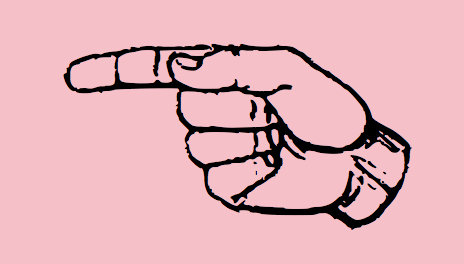 Carl Seal was a designer at Tealeaf Digital Type Foundry in the UK. He founded the free font foundry Little Red Circles, which is based in Manchester, UK. His typefaces are preponderantly of the grunge style, which was in fashion at the time of their creation, ca. 1998-1999:
Carl Seal was a designer at Tealeaf Digital Type Foundry in the UK. He founded the free font foundry Little Red Circles, which is based in Manchester, UK. His typefaces are preponderantly of the grunge style, which was in fashion at the time of their creation, ca. 1998-1999: - By Carl Seal: BaskerSans4 (1994-1995), Bitbloq, Bitmapbreakfast (1998), Bull (1998), Butter (1998), Calliglession (1998), Carl Hand (2015), Carl Scrib (2004), Carl Seal (1998), Chewy (1997), Crafty (2015), Crushedtalc (1998), DirtyHandBacks (2003), Dry Transfer Clarendon Crunch (2015, a glaz krak typeface), Dry Transfer Clarendon Crusty (2015), Dry Transfer Eurostile Bold Extended (2016), Dry transfer Futura Medium (2018), Dry Transfer Haphazard (2016), DuoGypsy (1998), EasyLino, Forma, GeekNormalish, Geekfat (1994-1995), Grivant, Growbag, Growbaged, Gypsy (1997), Hadnuf (2004), Inbreed, IndexCapsLoose (1997), IndexCapsStraight, IndexCapsTooLoose, IndexCapsTooStraight, Instamatik, Jakes FuzzyFelt, Jakes Stencil (2018), Kyleaged5, Kyleaged5half, Kyle Stencil (2003), LadyBoy (1998, calligraphic script), Leavingglassvegas (1999), Litrecs, Carl Lefty (2016: free), LRC Type Jake Aged Five (2016), MatrixBlow, MatrixNorm, MatrixSuck (1997), Mend (1997), MetisRota (1994-1995), MrFish (1999), Munch, Next, NuChina (1998), NuEngland (1998), NuJapan, Nudgedashak, Passion, PrintisDead (1994-1995), RaygunA, RaygunB, Repo Pocket (1998-1999: Sans, Outline Shadow, Condensed, Serif (2017), Slab Serif, Outline Fat), Repo Hands (2013, a free sign language font), Rupture, Scratch (2003), Scritch (1998), Shakasonikphormal, Shati, SheMale, Skript, Something, StampBold, Stamp CO Serif (2013: free), StampHeavy, StampLight, StampMedium, StampRegular, StampThin, StampUltraThin, Synsis, Theo Aged 6 (2016: free), Timig, Tweak, UnderWorldBlock, UnderWorldLine, Unrulycucumber, UnstukLino, Untitled, Userunknown, Whanted, Word Score Double (2015, scrabble font), Yatta.
- By Mark Bradley and Carl Seal: Phobia.
- By Tony Howell: Yuleo.
- By Jon Ratcliffe: Calligruffy.
Behance link. [Google]
[More] ⦿
|
Madhura Sinhala Font
[Chandana Madhura Kulathunga]
|
The free Madhura Sinhala font as part of the Madhura Sinhala English/Sinhala software package (contact: Chandana Madhura Kulathunga 313/4/C, Ceyloyd Homes, Gonamaditta Road, Piliyandala, Sri Lanka). [Google]
[More] ⦿
|
Mooniak
|
Mooniak is a collective of designers and creatives based in Colombo, Sri Lanka. The Mooniak type studio works with designers to produce quality fonts for South Asian scripts, and supports free culture by releasing almost all of their work under libre licenses. In 2016, they published Abhaya Libre via Google Fonts: Abhaya Libre is the Unicode compliant and complete libre version of Pushpananda Ekanayakes's FM Abhaya font, the most popular Sinhala typeface on Earth, with a new and original Latin [didone style] designed by Sol Matas. They were helped by Pathum Egodawatta, Ayantha Randika, Sumantri Samarawickrama and Liang Hai. In 2011-2013, Kosala Senevirathne, Siva Puranthara, Lasantha Premarathna and Tharique Azeez co-designed the free stencil typeface family Post No Bills. In 2021, Mooniak published Yaldevi at Google Fonts. Yaldevi is a narrow font intended for titles and short texts in the web supporing Latin and Sinhala scripts, designed by Sol Matas, Rajitha Manaperi and Kosala Senevirathne. Github link for Yaldevi. Fontsquirrel link. [Google]
[More] ⦿
|
Nayashyn Maumoor
|
As a graphic design student in Colombo, Sri Lanka, Nayashyn Maumoor created a squarish geometric typeface in 2015 that was influenced by the De Stijl movement and colored it in Piet Mondriaan's palette. [Google]
[More] ⦿
|
Niram Factory
[Tharique Azeez]
|
Niram Factory is run by Tharique Azeez, the London, UK and Sri Lanka-based designer of the commercial (originally, free) hand-drawn outline font Verumai (2014), the hand-drawn Solvanam (2014), the handcrafted Melampus (2014), the hand-drawn slab serif Amutham (2014), Aaram (2014, a monoline circle-based sans family), Rain & Neer (2014), the hand-drawn Ecstatic (2014), Nimiran (2014), Neythal (2014, free), Neythal Tamil (2014, free), Padagu (2014, a poster font), Besty (2014, a display typeface family), and the shaky hand font Rise Star Hand (2014). In 2011-2013, Kosala Senevirathne, Siva Puranthara, Lasantha Premarathna and Tharique Azeez co-designed the free stencil typeface family Post No Bills (Fontsquirrel link). Typefaces from 2015: Chaseera (a display sans with pizzazz), Neythal (free Comic Sans style Latin / Tamil typeface), Marziona (a gorgeous heavy brush font), Silgoumy (connected monoline script), Goldes, Tamil Didot. Typefaces from 2016: Icings (a free handcrafted typeface), Pavanam (a free Google Font for Latin (based on Vernon Adams's Pontano Sans) and Tamil; Github link), Kavinavar (a free Google Font for Latin and Tamil, whose slanted letterforms for Tamil are inspired by a manuscript by Kavivanar M. A. Azeez (1948-2002), a Tamil poet and educator who lived in Sri Lanka). Typefaces from 2017: Sofeeda (a free handcrafted typeface). Typefaces from 2021: Stick No Bills (a Latin / Sinhala font by Kosala Senevirathne, Siva Puranthara, Lasantha Premarathna and Tharique Azeez, Google Fonts, Mooniak). Dafont link. Fontspace link. Creative Market link [for buying his typefaces]. Behance link. Open Font Library link. Home page. Fontsquirrel link. [Google]
[More] ⦿
|
Niranjan Meegammana
|
Designer at Digital Research Sri Lanka of the Tamil font Kakamdotcom (2002). [Google]
[More] ⦿
|
Omniglot
|
Omniglot's page on Sinhala shows this syllabic alphabet, which is a descendant of the Brahmi script. Sinhala or Sinhalese, an Indo-Aryan language spoken in Sri Lanka by about 12 million people. There are also many Sinhala speakers in Singapore, Thailand, Canada and the United Arab Emirates. Sinhala is also used to write Pali and Sanskrit in Sri Lanka. [Google]
[More] ⦿
|
Pabasar
|
During his studies in Colombo, Sri Lanka, Pabasar designed the free circuit font Cirquee (2020). Open Font Library link. [Google]
[More] ⦿
|
Pathum Egodawatta
|
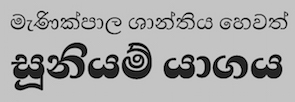 Sri Lankan type designer who started the MATD program at Reading in September 2015. He set up a foundry in Sri Lanka in 2015 that published a few Sinhala + Latin libre font families in collaboration with Sri Lanka's only other foundry. Creator of Amma (2013-2015), an experimental fusion of Tamil and Sinhala letters. This project was started as Other-Letter by Pathum Egodawatta as a partial fulfillment of Final year Proffesional Collaboration module of the Bachelor of Arts (Graphic Design) degree programme at Academy of Design, Colombo presented at Nothumbria Unversity, UK in July 2013.
Sri Lankan type designer who started the MATD program at Reading in September 2015. He set up a foundry in Sri Lanka in 2015 that published a few Sinhala + Latin libre font families in collaboration with Sri Lanka's only other foundry. Creator of Amma (2013-2015), an experimental fusion of Tamil and Sinhala letters. This project was started as Other-Letter by Pathum Egodawatta as a partial fulfillment of Final year Proffesional Collaboration module of the Bachelor of Arts (Graphic Design) degree programme at Academy of Design, Colombo presented at Nothumbria Unversity, UK in July 2013. Pathum graduated from the MATD program in Type Design at the University of Reading in 2016. His graduation typeface was Maname about which he writes: Maname is a versatile typeface family made of nine compatible instances for multiscript publishing in Sinhala, Tamil and Latin. The family contains text and title styles in Latin, Sinhala and Tamil; a secondary text style for Sinhala and Latin italic style. The Sinhala and Tamil design explore the possibilities of novel stroke modulation, drawing inspiration from a variety of sources from early 19th century. Rather than providing predefined relationships between the styles and scripts, Maname intends to provide a family of compatible components with greater flexibility for typographers. [Google]
[More] ⦿
|
Piyumi Udayangani
|
During her studies in Colombo, Sri Lanka, PiyumiUdayangani designed the Sinhala font PF Sulaga (2017). [Google]
[More] ⦿
|
Practise
[James Goggin]
|
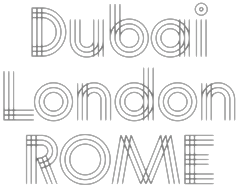 Graduate of London's Royal College of Art in 1999, James Goggin (b. 1975) founded graphic design studio Practise in 1999 in London with his partner Shan James. James was art director of The Wire (2005-2008). In August 2010, Goggin moved to Chicago where he was Design Director at the Museum of Contemporary Art Chicago (2010-2013). Previously he was based in Arnhem, the Netherlands, working as course director and teacher at Werkplaats Typografie (2009-2010) and visiting lecturer at ECAL (Ecole cantonale d'art de Lausanne) (2009-2010). The studio Practise has been based in Providence, RI, since 2016 where James also teaches BFA and MFA Graphic Design at Rhode Island School of Design (RISD). Aka Jacques Gauguin and "Practise", he has worked in London, Auckland and Sri Lanka.
Graduate of London's Royal College of Art in 1999, James Goggin (b. 1975) founded graphic design studio Practise in 1999 in London with his partner Shan James. James was art director of The Wire (2005-2008). In August 2010, Goggin moved to Chicago where he was Design Director at the Museum of Contemporary Art Chicago (2010-2013). Previously he was based in Arnhem, the Netherlands, working as course director and teacher at Werkplaats Typografie (2009-2010) and visiting lecturer at ECAL (Ecole cantonale d'art de Lausanne) (2009-2010). The studio Practise has been based in Providence, RI, since 2016 where James also teaches BFA and MFA Graphic Design at Rhode Island School of Design (RISD). Aka Jacques Gauguin and "Practise", he has worked in London, Auckland and Sri Lanka. His typefaces: - In 2001, he made the three-weight LL Courier Sans (+Mono) at Lineto.
- Between 2003 and 2014, James Goggin, Rafael Koch, Mauro Paolozzi, and Arve B%aring;tevik developed LL Prismaset A at Lineto, a redesign and extension of Rudolf Koch's Prisma (1930).
[Google]
[More] ⦿
|
Ruqaiyah Jafferjee
|
During her studies in Colombo, Sri Lanka, Ruqaiyah Jafferjee just used triangles to create an experimental Latin typeface (2015). Behance link. [Google]
[More] ⦿
|
Sam Radian
|
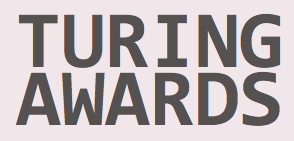 Colombo, Sri Lanka-based designer of the monospaced sans programming font Code New Roman (2014, Open Font Library). Alternate download site. Dafont link. [Google]
[More] ⦿
Colombo, Sri Lanka-based designer of the monospaced sans programming font Code New Roman (2014, Open Font Library). Alternate download site. Dafont link. [Google]
[More] ⦿
|
Sanora Rodrigo
|
Based in Colombo, Sri Lanka, Sanora Rodrigo, who studies at the Academy of Design in Colombo, created the neon tube font Electromec in 2012. [Google]
[More] ⦿
|
Shanika R
|
Art director in Colombo, Sri Lanka, who created the triangulated typeface Kaleidoscope (2015). [Google]
[More] ⦿
|
Shanwasantha Kumara
|
Sri Lankan designer of AA-Hansika (2011) for Sinhala. [Google]
[More] ⦿
|
Sinhala and Roman
|
"Tipitaka_Sinhala1 is a public domain font made by DMS, Sri Lanka. for the Sri Lanka Tipitaka Project." John D. Smith (University of Cambridge) writes: The fonts in this archive implement the CSX+ character set designed for use in printing Indian language material in Roman script. They are based on fonts designed by URW++ Design and Development Incorporated Poppenbuetteler Bogen 29A D-22399 Hamburg Germany and made available under the terms of the GNU General Public License. Fonts: LeedsBit-PaliTranslit-Normal, CPD-1-1 (for Pali), Times_CSX+ family (URW, 1994), E_Sinhala1, Tipitaka_Sinhala1, E_Sinhala2. [Google]
[More] ⦿
|
Sri Lankan Expatriates
|
This extinct archive had these free Sinhala and Tamil fonts: - From Lalantha Graphics - Leonard Wilegoda: AjithNewS (1995).
- From A.M.D. Lenarolle (Arawwala Pannipitiya): DL-Anurada, DL-KIDURU, DL-Lihini, DL-MANO., DL-Malathi, DL-Manel, DL-Manel, DL-Manel, DL-kumari, all made in 1996.
- From Pushpananda Ekanayaka: FMArjunnx, FMBasurux, FMDeranax, FMEmaneex, FMGanganeex, FMGemunux, FMSamanthax, all made in 1998.
- From Ethno Multimedia & Ranjan Shivakumar: Hemawathy (1994).
- From KKGrapteks: Jeyatharsan-Plain (1999).
- From S. Madhava Tennakoon: Kelani (1995).
- From Digital Research in Sri Lanka: Matara (1998).
- From K. Srinivasan: Mylai-Sri (1996).
- From Lastech: Padma (1992).
- From Micro & Way Font Bank Inc. Kolitha v. Dissanayake: Radhika-PC, Ranasuru-PC (1995).
- From S. Kannan at Kannan Graphics: Sathiy (1996).
- From DMS Electronics for The Sri Lanka Tipitaka Project: Tipitaka_Sinhala1, Tipitaka_Sinhala2 (1998).
- From LankaNatha: Lankanatha, LankanathaSuppliment.
- Other: AKandyNew, AKandyNewSupplement, JaffnaNormal, Kandy, KandySupplement, Kaputadotcomnormal, ManelNew.
[Google]
[More] ⦿
|
Sri Lanka Tipitaka Project
|
Sri Lankan site with the Sinhala fonts Tipitaka_Sinhala1 and Tipitaka_Sinhala2 produced by DMS Electronics for The Sri Lanka Tipitaka Project. Also included are LeedsBitPaliTranslitNormal, TimesNewRomanPSMT, Times_CSX+-Bold, Times_CSX+-BoldItalic, Times_CSX+-Italic, Times_CSX+-Roman, LeedsBitPaliTranslitNormal. [Google]
[More] ⦿
|
Steve White
[GNU Freefont (or: Free UCS Outline Fonts)]
|
[More] ⦿
|
Sumanthri Samarawickrama
|
Sumanthri Samarawickrama is a senior lecturer in the Department of Integrated Design, Faculty of Architecture, University of Moratuwa, Sri Lanka. Her area of research concerns the anatomy of Sinhala letterforms. This has led her to document the evolution of Sinhala type. She completed a master's degree in visual communication design at Lasalle College of the Arts, Singapore, and a PhD in typography at the University of Moratuwa. Speaker at ATypI 2019 in Tokyo on the topic of Sinhala Wood-Block Type. [Google]
[More] ⦿
|
Tharique Azeez
[Niram Factory]
|
[More] ⦿
|
Thibus Software System
|
Sri Lankan company offers Sinhala, Tamil and English language tools in one package. Their software has 36 Sinhala fonts and 22 Tamil fonts. [Google]
[More] ⦿
|
Thilanka Weerawardana

|
Colombo, Sri Lanka-based designer (b. 1979) of the Sinhala fonts Cadet (2020) and Sandhwani (2020), and the (Latin) curly ironwork typeface Lanka Curves (2020), which works in Sinhala art symbols in its Latin glyphs. [Google]
[MyFonts]
[More] ⦿
|
Uthmax
|
Sri Lankan designer ca. 1999 of the free Sinhalese typefaces AMS Bindu, AMS Arunalu, AMS Ajith, and Uthmax. [Google]
[More] ⦿
|
Uvin Gunasena
|
Graphic designer from Colombo, Sri Lanka. Creator of the experimental Mutation Typography alphabet in 2009. [Google]
[More] ⦿
|
Vanniyasingam Suhanthan
|
Sri Lankan designer of the Tamil font PerathanaiTSC (2001), which can be found here. [Google]
[More] ⦿
|
Vijayakumar Sinnathurai
[Ethno Multimedia]
|
[More] ⦿
|

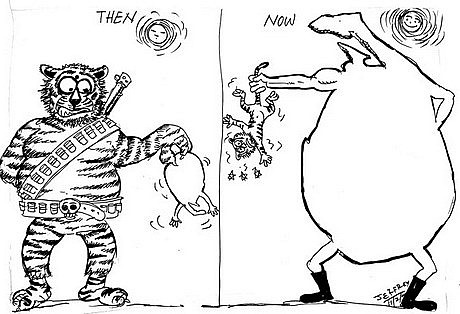
 During her graphic design studies in Colombo, Sri Lanka, Adhila Marz created the display typeface
During her graphic design studies in Colombo, Sri Lanka, Adhila Marz created the display typeface  Colombo, Sri Lanka-based graphic designer who created a stunning letter F in 2017. [
Colombo, Sri Lanka-based graphic designer who created a stunning letter F in 2017. [ The GNU Freefont is continuously being updated to become a large useful Unicode monster. GNU FreeFont is a free family of scalable outline fonts, suitable for general use on computers and for desktop publishing. It is Unicode-encoded for compatability with all modern operating systems. There are serif, Sans and Mono subfamilies. Also called the "Free UCS Outline Fonts", this project is part of the larger Free Software Foundation. The original head honcho was
The GNU Freefont is continuously being updated to become a large useful Unicode monster. GNU FreeFont is a free family of scalable outline fonts, suitable for general use on computers and for desktop publishing. It is Unicode-encoded for compatability with all modern operating systems. There are serif, Sans and Mono subfamilies. Also called the "Free UCS Outline Fonts", this project is part of the larger Free Software Foundation. The original head honcho was  [
[ Carl Seal was a designer at Tealeaf Digital Type Foundry in the UK. He founded the free font foundry Little Red Circles, which is based in Manchester, UK. His typefaces are preponderantly of the grunge style, which was in fashion at the time of their creation, ca. 1998-1999:
Carl Seal was a designer at Tealeaf Digital Type Foundry in the UK. He founded the free font foundry Little Red Circles, which is based in Manchester, UK. His typefaces are preponderantly of the grunge style, which was in fashion at the time of their creation, ca. 1998-1999:  Sri Lankan type designer who started the MATD program at Reading in September 2015. He set up a foundry in Sri Lanka in 2015 that published a few Sinhala + Latin libre font families in collaboration with Sri Lanka's only other foundry. Creator of
Sri Lankan type designer who started the MATD program at Reading in September 2015. He set up a foundry in Sri Lanka in 2015 that published a few Sinhala + Latin libre font families in collaboration with Sri Lanka's only other foundry. Creator of  Graduate of London's Royal College of Art in 1999, James Goggin (b. 1975) founded graphic design studio Practise in 1999 in London with his partner Shan James. James was art director of The Wire (2005-2008). In August 2010, Goggin moved to Chicago where he was Design Director at the Museum of Contemporary Art Chicago (2010-2013). Previously he was based in Arnhem, the Netherlands, working as course director and teacher at Werkplaats Typografie (2009-2010) and visiting lecturer at ECAL (Ecole cantonale d'art de Lausanne) (2009-2010). The studio Practise has been based in Providence, RI, since 2016 where James also teaches BFA and MFA Graphic Design at Rhode Island School of Design (RISD). Aka Jacques Gauguin and "Practise", he has worked in London, Auckland and Sri Lanka.
Graduate of London's Royal College of Art in 1999, James Goggin (b. 1975) founded graphic design studio Practise in 1999 in London with his partner Shan James. James was art director of The Wire (2005-2008). In August 2010, Goggin moved to Chicago where he was Design Director at the Museum of Contemporary Art Chicago (2010-2013). Previously he was based in Arnhem, the Netherlands, working as course director and teacher at Werkplaats Typografie (2009-2010) and visiting lecturer at ECAL (Ecole cantonale d'art de Lausanne) (2009-2010). The studio Practise has been based in Providence, RI, since 2016 where James also teaches BFA and MFA Graphic Design at Rhode Island School of Design (RISD). Aka Jacques Gauguin and "Practise", he has worked in London, Auckland and Sri Lanka.  Colombo, Sri Lanka-based designer of the monospaced sans programming font Code New Roman (2014,
Colombo, Sri Lanka-based designer of the monospaced sans programming font Code New Roman (2014, 